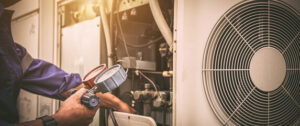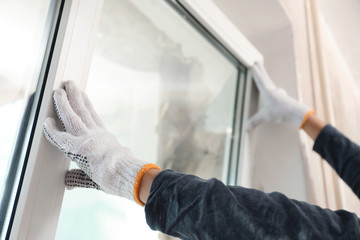Ants are a common household pest that can be difficult to control. Nontoxic commercial ant sprays can be used to repel and kill them, but these products should only be used when necessary.
Other options include sprinkling coffee grounds, cinnamon, and vinegar along ant trails and entry points to deter them. Diatomaceous earth is another natural Pest Control Irving TX option that works by disrupting their pheromone trail and killing them.

Bait Stations
The use of baits for ant control is one of the most effective methods available. Baits contain chemicals that attract and then kill ants when they ingest them, and they also discourage other insects from entering the area, making them an important part of any integrated pest management program. However, before you try any baits, it is critical to understand that proper identification of the ant species involved is essential for designing a successful management program; different ant species look similar and have very different life cycles, behaviors, and habitats.
Liquid baits (including gel formulations) in bait stations placed outside can draw ants away from structures and may be especially useful for controlling ant species that tend to invade buildings, such as Argentine ants, tawny crazy ants, and white-footed ants. These products are often used in conjunction with caulking cracks and crevices to manage ant intrusions.
In addition to liquid baits, solid ant baits are also available. These come in a variety of forms, including prepackaged baits that are placed into small ant stake containers and then placed into bait stations, and in refillable dispensers. Refillable bait stations are especially useful because they protect the bait from photodegradation and disturbance by children and pets.
The type of bait you choose depends on the ant species you’re treating and will change throughout the year as food preferences vary with season. Some ants prefer carbohydrates, while others are drawn to oils or protein sources. In addition, ant species have different tolerances to the chemical ingredients in pesticides. For best results, avoid contact insecticide sprays while using ant baits, and be sure to check and replace baits frequently.
Borax
Borax is an effective and inexpensive method to control ants in and around your home. It’s a powdery white mineral that contains boron and is often found in dry lake beds or in areas where water has evaporated over time. It’s also commonly used in household cleansers and as a laundry detergent booster. It has several uses in the kitchen as well, including reducing static electricity and cleaning grease off cooking pans. It’s even one of the key ingredients in the putty or slime that kids love to play with.
When an ant walks through borax, it picks up a scent trail that leads back to the colony. Other ants then follow that scent trail and are poisoned when they consume the bait. This slow-acting poison kills the ant colony from within. Borax is also safe for children and pets, as long as it’s not ingested in large quantities.
Sprinkle a light dusting of borax around cracks, crevices, and other sites where ants might enter your home. You can also add borax to a damp sponge and work it into a paste for hard-to-reach places like your garbage disposal, sink, or shoe rack. It also works as an alternative to commercial cleaners on vinyl and tile countertops, eliminating soap scum, mildew and other residue.
Perimeter treatments of water-based residual sprays can be an effective control measure for ants, but this won’t provide lasting results. Perimeter treatments are only effective for removing the foraging ants, but not the queen or her eggs. Infestations that are left untreated will quickly repopulate and return. Gel formulations of pesticide baits, which are available to homeowners as well as professionals, are a much better option for achieving lasting ant control.
Vinegar
Ants are an extremely common pest, especially around homes. A variety of ant management strategies are available, including using baits and traps to kill or deter them. Perimeter sprays can be useful if a specific species of ant (e.g., Argentine or crazy ants) is involved in a large infestation. However, if this is the only approach, persistence problems may arise due to the rapid wear of residual insecticides from sun and rain and the colony’s resistance to such products.
In addition to baits, several natural substances can be used as ant repellents in the home and garden. Vinegar, for example, contains acetic acid, which is poisonous to ants and other insects. A solution of equal parts water and vinegar can be sprayed on ant trails or around entry points to a house. This can kill the ants and also disrupt their pheromone trails, which send messages to other ant members that food is nearby.
Other ant repellents include cinnamon, coffee grounds, and cayenne pepper, all of which contain strong scents that can drive ants away. The rinds of citrus fruits, particularly oranges, and lemons, can be sprinkled on or near ant trails as an effective ant repellent as well.
To prevent ants from entering indoors, store foods in airtight containers and wipe up spills and crumbs promptly. Use can liners in indoor trash cans and be sure to empty them regularly. It’s also a good idea to caulk cracks and crevices around foundations, window frames, and doors as well as other sites where ants might enter a building. For additional protection, some homeowners apply professional products to seal these openings.
Essential Oils
A variety of natural substances can be used to discourage ants and keep them from entering your home. For example, sprinkling talcum powder along ant trails confuses their scent and prevents them from following it. This is not a complete control method, however, as it will not eliminate the ant colony. If you are experiencing a serious problem, consider using another type of natural repellent or call a pest control company.
Many cleaning products and vinegar are also effective at deterring ants. If you spot ants inside your home, simply spritz them with the cleaning product and wipe them up. This will disrupt their pheromone trail and cause them to be unable to signal to their buddies that food is nearby.
Other methods of deterring ants include rubbing coffee grounds on ant trails or near entry points, placing a smear of cinnamon around entrances, and cayenne pepper in kitchens and pantries. You can also use diatomaceous earth (DE) which is a safe alternative to harsh chemical pesticides and will kill them on contact. DE is made from the fossilized remains of microscopic aquatic organisms. You can purchase it at a local hardware store or ask your pest control professional for more information on its uses.
Lastly, be sure to caulk cracks and crevices where possible to prevent ant access into your building. Caulking is particularly important in areas where electrical wires, pipes, and plumbing enter your home. You can also apply a commercial ant repellent to door and window jams, in wall voids, and other sites where ants frequently travel. This product contains silica aerogel that repels ants and other insects.
Pepper
The pepper plant is a member of the Piperaceae family and produces fruits with thin skins that contain a large amount of volatile oil. These oils, which smell and taste hot to humans, are dried and ground into black peppercorns to produce a common kitchen spice. Peppercorns are highly effective at repelling ants and other insects.
Sprinkle a line of cayenne pepper or cinnamon around the problem area of your home, baseboards, etc. This will deter the ants instead of killing them and also mask their scent trail so that they can’t follow it to find food.
Ants are a common household pest that can be very difficult to control. Ants are often attracted to indoor food sources and can enter a home through cracks, crevices, or open windows and doors. Some species are more prone to invade a building than others, and seasonal weather changes can trigger an influx of ants.
Proper ant management requires the use of several different strategies including physical, cultural, and chemical controls. A product toolbox that includes baits, gels, and sprays helps control ant populations.
In addition to implementing these methods, homeowners can take steps to prevent an invasion by reducing the availability of outdoor food and water sources, sealing entry points into buildings, and cleaning up crumbs and spills promptly. Also, identifying and avoiding the food items preferred by individual ant species is important. This can help reduce the reliance on repellant products for ant management in homes. A trained professional can identify specific ant species and recommend the best practices for managing them. A professional can also provide advice on preventing and controlling invasive pests that may be introduced from outside, such as fire ants.



